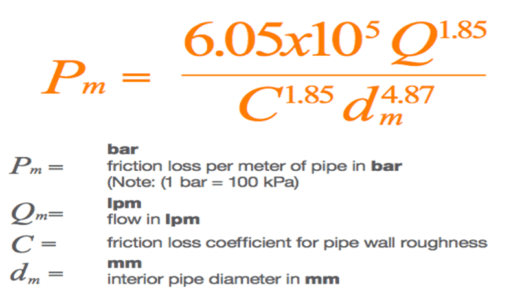How Hydraulic Calculation and BlazeMaster® CPVC Saves Time and Money
All fire protection systems are designed to save lives and protect property. But, depending on their design, certain systems can also reduce labor and material costs.
Historically, contractors relied on the Pipe Schedule System method for fire protection design. This system requires the designer to know the hazard classification of the building (light hazard, ordinary hazard or extra hazard), the pressure of the water supply, and the spacing between sprinklers. The designer then uses a table or “schedule” to choose the size of the pipe needed to supply the sprinklers.
But this design method is outdated and often uses larger, more expensive pipe sizes than actually needed. It’s also somewhat unreliable because it’s based on a previously set schedule of pipe sizes and there is no verifiable way of knowing how the system will perform.
Because of these variables, the National Fire Protection Association (NFPA) introduced a more accurate and reliable system design method known as Hydraulic Calculation.
What is Hydraulic Calculation?
NFPA 13 is the standard for fire protection system installation. It requires the designer to perform a hydraulic calculation to confirm the system is measured accurately for its particular application.
Hydraulic calculation measures changes in pressure based on internal pipe friction. It uses a specific formula to calculate the flow of liquids through a piping system and ensures enough water can be supplied to effectively control a building fire.
The Formula Behind Hydraulic Calculation
The Hazen-Williams formula is the equation that’s long been used for calculating the friction loss in pipe systems. It determines the appropriate size of pipe and sprinklers to use in a fire protection system by calculating actual pressure loss based on the length of pipe and internal friction. The less friction there is, the more easily the water can flow, limiting pressure and allowing for smaller pipe sizes.

In the Hazen-Williams Formula above, the higher the value for C (friction loss coefficient for pipe wall roughness), the narrower the internal pipe diameter can be to achieve the equivalent flow rate.
Hydraulic Calculation and BlazeMaster® Pipe Maximizes Efficiency and Minimizes Costs
Hydraulic calculation is the most accurate and preferred design method because it works for all types of systems and pipe materials. But when compared to materials such as steel, the combination of using hydraulic calculation and BlazeMaster CPVC enables fires to be extinguished with maximum efficiency.
BlazeMaster CPVC has a consistent Hazen-Williams C Factor of 150 while steel has a starting C Factor of 120 that diminishes over time due to its susceptibility to corrosion. Because of this, the interior surface of BlazeMaster CPVC pipe is smoother than most metal pipes, creating less friction to interfere with water flow. This enables the piping system to have an equivalent flow rate through smaller and fewer pipes, which ultimately results in savings on material and labor costs.
Learn More About Hydraulic Calculation and BlazeMaster CPVC Pipe and Fittings
Hydraulic Calculation has been a proven and reliable design method for fire sprinkler systems for decades. To learn more about system design and BlazeMaster Fire Protection Systems, download our Hydraulic Calculation Guide.

